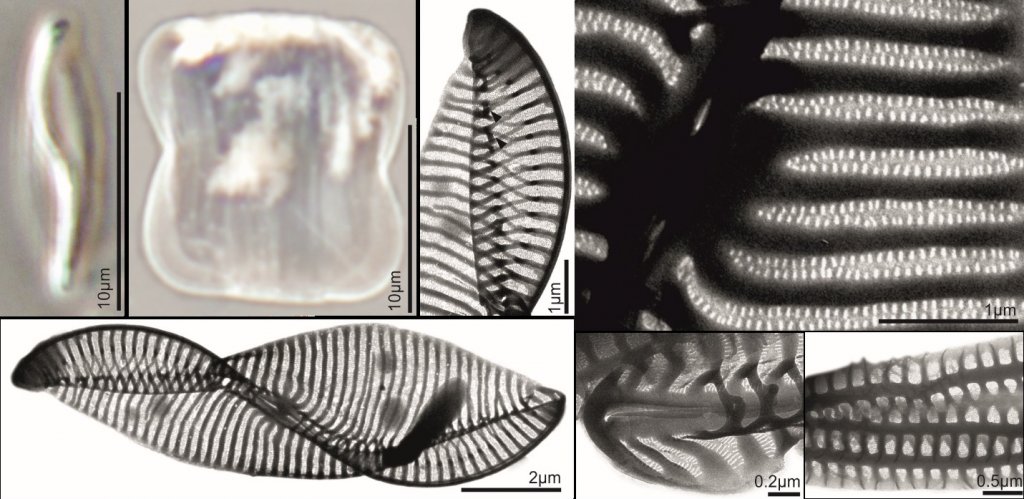Isotype of this species is deposited in the Croatian National Diatom Collection as permanent slide under accession number HRNDC000001.

From Latin adjective “pusilla” (miniature, tiny, very small) referring to the typical cell size.
Croatia: Adriatic Sea, south–eastern coast, open waters (N 42°24ʹ E 17°55ʹ). Plankton net sample collected on March 10, 2016 by S. Bosak. Holotype slide of the strain PMFBIOP1 deposited in The Friedrich Hustedt Diatom Study Centre, Bremerhaven, Germany as BRM ZU10/84. Isotype slide deposited at Macedonian diatom collection, Skopje, Macedonia under accession number 011647/ MNDC. GenBank accession numbers for PMFBIOP1 are MF000612 (18S rRNA), MF000640 (rbcL) and MF000626 (psbC).
Cells very small, with heavily silicified frustules with one plate–like plastid, not twisted around the apical axis: 9.7–14.1 μm long, 2.6–10.0 μm wide at constricted central part and 5.4–11.1 μm in widest part. Valves lanceolate with scalpeliform apices, 9.7–14.1 μm long, 2.3–3.8 μm wide in central part. The transition from the elevated keel to the valve body creates an impression of a straight line. Virgae are straight, simple, and parallelly extending through whole valve body, with few virgae shorter than the rest. Valve striae 40–55 in 10 μm. Keel striae 57–60 in 10 μm. The striae are closed by a hymen with very narrow dash-like perforations arranged in two parallel lines along the striae edges. Perforations within striae 64–75 in 1 μm near the keel margin and 49–50 in 1 μm near the valve margin. Basal fibulae sometimes interconnected with adjacent ones with transverse connections in shape H or Y, 4–5 in 1 μm. Sigmoid raphe with simple linear central endings and slightly hooked terminal endings. Raphe fibulae 50–60 in 10 μm, sometimes fused between each other forming H or K shape. Valvocopulae and copulae straight, with two rows of distinct teardrop shaped areolae, and with silica thickenings in interareolar area. Areolae density in copulae same as in valvocopulae, 40–45 in 10 μm. In valvocopula there are 14–29 and 24–32 perforations in abvalvar and advalvar areolae, respectively.